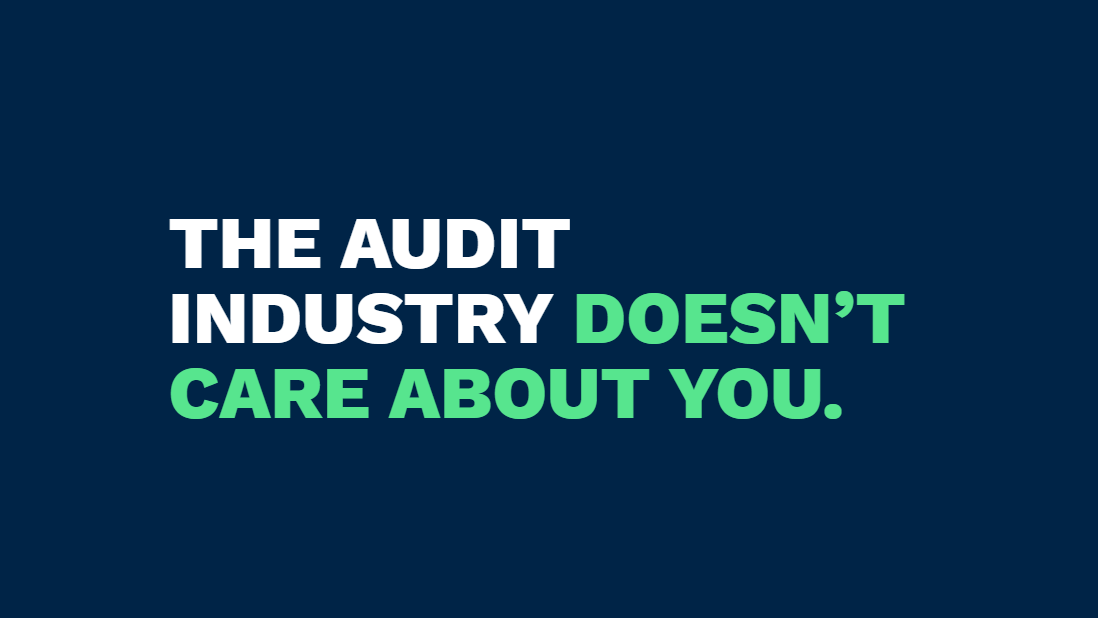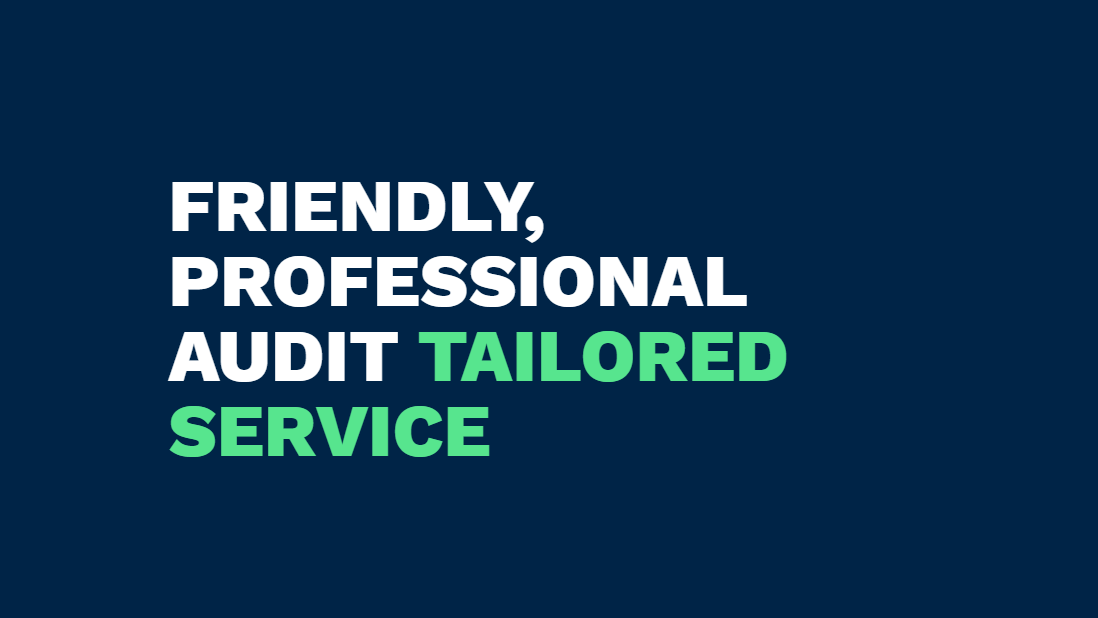There’s writing and then there’s copywriting. If you want your accountancy firm’s website to generate leads and promote your brand, you need professional copywriting.
Copywriting is the technical term for crafting text for marketing purposes. It’s most often used to describe the words used in advertisements, from billboard slogans to the quotable taglines you hear on TV.
But ‘copy’, which is what copywriters produce, can be anything from the lyrics of jingles to scripts for radio ads, from the straplines under logos to the text that appears on screen when your phone starts up.
These days, of course, it also means the words that appear on your website – the heading at the top, the introductory paragraph, the buttons and ‘calls to action’… Everything.
I’ve used the word ‘crafting’ quite deliberately above.
In our complete guide to content marketing for accountants, we talk about the hierarchy of types of online writing and put copywriting at the top of the pile, above blog posts and way above social media content.
That’s partly because copy has a long shelf life. Put out a dud blog post and it’ll soon disappear in the feed, but the chances are that you’ll be living with the copy on your website for several years.
It’s also because copy is the most purposeful of all types of writing, ruthlessly focused on driving buyers towards the end of their journey – that is, a purchase.
To achieve that, it has to be sharp and efficient, using the fewest possible words to serve multiple functions.
Typically, headline copy ought to:
- Engage – capture their attention and imagination, lodge in their heads.
- Inform – get across what the business does.
- Differentiate – convey what makes the firm different – it’s personality.
- Look good – work with visual design to tell a coherent story.
And web copy has to work harder again because in most cases, certainly on websites dedicated to lead generation, it needs to help with search engine optimisation (SEO).
“SEO | Search engine optimisation. The practice of tweaking content and website settings to encourage Google to present your website higher in search results.” – PracticeWeb digital marketing jargon buster
The technical challenge is great fun and for a writer, the thrill of coming up with a perfectly cut jewel of a phrase is immense.

An example of Julian Koenig’s legendarily brilliant 1960s copywriting for Volkswagen on display at the Design Museum in London.
Effective copywriting requires a real mastery and efficiency of language. Perhaps that’s why so many famous novelists started their careers as copywriters in ad agencies.
Fay Weldon, who composed the famous line “Go to work on an egg”, F. Scott Fitzgerald (The Great Gatsby) and Joseph Heller (Catch-22) are just three notable examples.
The copywriters on my team have degrees in English and journalism and between us we’ve got experience working in government, publishing, the newspaper industry, marketing and customer communications.
Because we’re trained to write, and because we write all day every day, we’ve got an easy confidence with words that makes composing compelling copy relatively less challenging for us than for colleagues and clients.
What polished copy looks like
The most satisfying projects we work on are those where an accountancy practice commissions us to produce both a website design and web copy.
In those cases, the full creative process can take place, with editors and designers working together to create a coherent whole.
Visual design influences copy which influences visual design, back and forth, until every element works together to convey quality and attention to detail.
One website we’re especially proud of is Rise Audit, which has some very punchy copy by my colleague Melissa Tredinnick.
This strong tone of voice flowed out of brand strategy and content strategy workshop which the client really got stuck into, giving designers and copywriters plenty to work with.
You’ll note how neatly the words fit together, too, and the decision – not taken lightly – to use a full stop at the end for added ‘thump’.
A sometimes overlooked aspect of copywriting is its similarity to the art of writing newspaper headlines.
In both disciplines, words are chosen not only because they sound right but because they have the right number of letters and the appropriate t visual weight, usually to draw the reader’s eye into an article or content that follows.
But imagine if Melissa hadn’t spent so much time sharpening the copy – imagine if she’d just plonked the first thing that popped into her head onto the page.
Is it engaging? Not especially. Does it convey information? Just barely. Does it set this firm apart? Definitely not – aren’t all firms friendly and professional as standard? And does it look good? No, not least because ‘professional’ is too long a word and breaks up the entire flow of the heading.
If you must do your own copywriting…
We would love all of our website clients to commission copywriting from us, but we understand that not every accountancy firm will be in a place to do so.
In that case, here’s some advice on how you give copy you provide yourself more impact and polish.
First, here’s how you might tackle the headline – the chunk of copy that occupies the most valuable real estate on your homepage.
- Write for your clients, not peers. Don’t bore your prospects with technical jargon they probably won’t understand. Speak to them in layman’s terms.
- The 50/50 rule. Aim to spend as long on the main heading on your website as you do on all the rest of the copy.
- Don’t settle for the first idea you have. Come up with 20 or 30 alternatives and give yourself time to iterate.
- Say it out loud. Good copy feels good to say.
- Imagine the copy on your business card. Or even mock it up in Photoshop, Pixlr or GIMP, if you can. Does it represent you?
- User testing. Put them into a slideshow and show them to colleagues and, ideally, also to clients. Ask test subjects questions like “Does this seem professional?” or “Would this make us stand out from Smith & Co up the road?”
Beyond the top level copy, achieving a professional finish requires, at the very least, consistency and precision.
When we’re producing web copy, before we put a word down, we produce what we call a ‘tone of voice guide’ for the client.
This establishes certain rules and principles, such as whether they say ‘chat’, ‘talk’ or ‘discuss’, and how comfortable they might be using contractions like ‘can’t’ and ‘won’t’.
You should do something like this yourself if you’re writing copy, just to ensure everyone involved – directors, managers, marketing staff – is working to the same end.
Looking for content that
gets results?
Our results-focused content marketing is designed to cut through noise, nurture sales prospects and build your firm’s reputation.
Words that work
However you achieve it, making sure your copy shines isn’t window-dressing or fluff – it’s vital in achieving your business goals.
If you want to test this theory, think of three or four brands you like – not necessarily accountancy businesses – and take a look at their website.
Is the copy on the homepage generic, or distinctive? Does it seem polished, or thrown together?
If you want some inspiration, check out Interbrand’s recently published list of the top one hundred brands for 2019. Some of the copy on the homepages of the top ten companies makes the point well:
- Apple – “Pro cameras. Pro display. Pro performance.” Alliterative, punchy, six-words packed with information and conveying the values of the brand.
- Coca-Cola – “Put perfect on ice.” Four words, incredibly satisfying to say aloud, and evoking what it’s like to drink a cold Coke.
- BMW – “The Ultimate Driving Machine” Again, four words, conveying confidence almost to the point of arrogance.
Now, I’m not saying your firm could be The Ultimate Accounting Machine but… Huh. Actually, that’s not bad.
To find out a more about how we can help your firm, have a look at our content writing services or simply get in touch.



